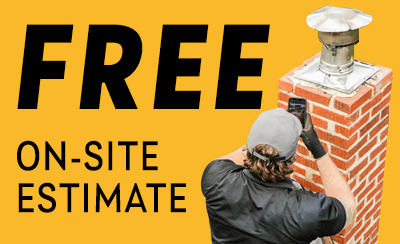How to Get the Most Out of Your Fireplace
A fireplace can be the centerpiece of a home, but only if it’s working the way it should. When problems go unnoticed, efficiency drops and safety risks rise. That’s why it’s important to understand common issues and how to prevent them before they turn into costly repairs.
 Top Problems That Affect Fireplace Performance
Top Problems That Affect Fireplace Performance
A lot of things can cause a fireplace to run inefficiently or dangerously.
For example:
- Chimney leaks
- A wrong-size flue
- Poor workmanship in building the fireplace
- Improper installation
- Low-quality materials
Other reasons include many things that you as a homeowner have direct control over.
Felgemacher is a recognized leader in fireplace sales, installation and safety in the greater Buffalo, NY, and Rochester, NY, regions. We’d like to share a few tips for smart fireplace use we’ve learned since 1953.
Fireplaces are Made for Firewood Fires
If you have a wood-burning fireplace, it’s not designed for just any kind of fire. The chimney should be properly sized and the firebox specifically constructed to safely handle fires only from real wood logs.
Never use:
- Clothing
- Newspaper (large amounts – for kindling it’s okay)
- Cardboard
- Plastics
- Metals
- Furniture pieces
Additionally, don’t start fires with kerosene, lighter fluid, charcoal starter or any other accelerant.
All the above items and substances can burn very hot and release poisonous combustion gases. Keep them out of your fireplace.
Let the Logs Breathe
Whether you burn your log stack from the top down or the bottom up, the logs need room to breathe. Arrange them on a grate with plenty of air to circulate for robust fires rather than sluggish fires that produce large amounts of smoke.
Excess fireplace smoke can back up into your home. It can also go up the chimney and become creosote, which is the #1 cause of reported chimney fires every year in Buffalo, NY, and Rochester, NY.
Damp Wood is Smoky Wood
Have you ever seen a rescue bonfire built on a beach in a movie? They use wet driftwood, and the smoke plume is so huge, you can see it for miles away. This is because moisture in damp wood makes it very smoky.
Dry, seasoned firewood, on the other hand, burns with minimal smoke, and the less smoke, the less creosote.
Safety Precautions
Follow these fireplace safety precautions at all times:
- Make sure there’s a working carbon monoxide monitor near the fireplace.
- Place smoke detectors near the fireplace and in other parts of your home.
- Never leave an active fire unattended.
- Consider a fireplace screen to protect children and pets from the flames.
- Open your fireplace damper completely before you begin building your fire.
 Fireplace and Chimney Service
Fireplace and Chimney Service
Annual fireplace and chimney inspections are recommended by nearly every fire safety and hearth organization in New York and the rest of the country. These inspections cover all readily accessible parts of your system, with specialized inspections available for emergencies and unusual circumstances.
Chimney sweeping is another annual service you should schedule if you use a wood fireplace. Buildups of creosote in the chimney flue can happen fairly quickly, and you want to keep them at a minimum to reduce the chance of a chimney fire.
The Help Your Fireplace Needs
Felgemacher is committed to helping our customers use their fireplaces safely and correctly. We’re always here to answer questions and offer expert advice. Visit us at 2727 Broadway, Suite 5, in Cheektowaga, NY, or get in touch through our online contact form.



